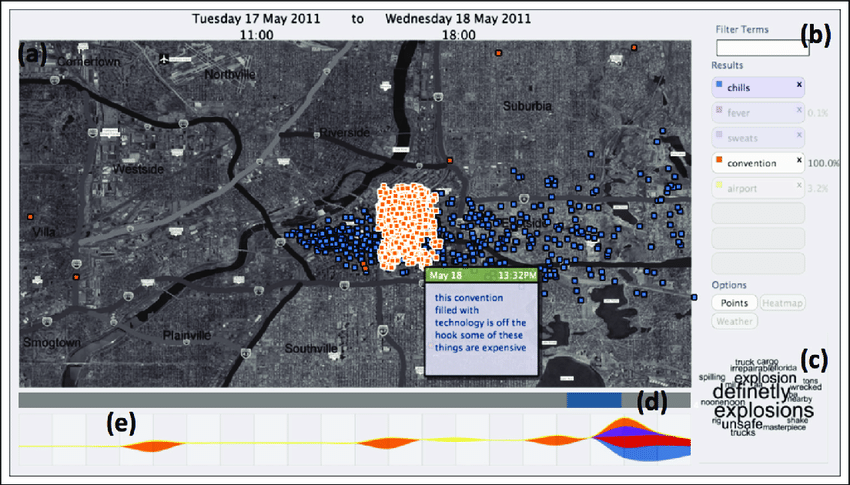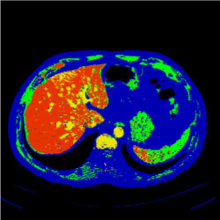Visualisation, Data, Modelling and Graphics
Visualisation, Data, Modelling and Graphics
Research in VDGM revolves around the themes of human-computer interaction, data and information visualization, visual analytics, computer vision, pattern recognition, machine learning, (X)Realities, artificial life, evolutionary computing, and learning analytics. Researchers from VDMG have pioneered developments in the areas of data classification, information visualization, virtual reality and medical graphics. The group has attracted funding from a variety of sources such as the European Commission (e.g, H2020 funded project Water4Cities and the FP7 Rasimas and Fly4PET) the Welsh Government (e.g., RIVIC, Wales) and the UK Government (e.g., AHRC funded projects Collocaid and HeritageTogether and EPSRC CDT in AI/ML/AC) and other UK foundations and trusts (e.g., Nuffield and Leverhulme). The group works collaboratively across University with the Schools of Ocean Sciences, Natural Sciences, Law, Archeology, Psychology, and Languages Literatures and Linguistics. Research Collaborators in the UK include the universities of Surrey, Swansea, East Anglia, Cardiff, Newcastle, Edinburgh Napier and Lincoln. International Collaborators include the Samsung, Nvidia, Oculus/Facebook, and the Universities of Maryland, Inria, INRA, Eberhard Karls University of Tübingen, Tsinghua University, the University of Burgos, and the University of Thessaly. VDMG comprises of six intertwined labs: the Information Visualization and Visual Analytics lab, the XRealities and Immersive Environments lab, the Pattern Recognition and Machine Learning lab, the Artificial Intelligence lab, the Modelling and Imaging lab, and the Learning Analytics lab.
Information Visualisation and Visual Analytics
The Information Visualization and Visual Analytics lab explores the use of data visualization in a variety of application domains, such as cultural heritage, linguistics, law and governance, and environmental resource management. Our work revolves around creating new visualization paradigms, techniques and tools that enhance the sensemaking of data, building upon knowledge from the fields of human-computer interaction, design, cartography and data science. We have a long history in the domains of multiple-coordinated views, ideation and design, visual analytics and interdisciplinary application of visualization. The lab is the home of many contemporary and popular visualization techniques, such as the Five-Design Sheets methodology, used in many Visualization courses as an ideation mechanism for visualization researchers. We have also won an “Outstanding Analysis using Custom Tools” award in the IEEE VAST 2011 challenge.

epSpread - Storyboarding for visual analytics
XRealities and Immersive Environments
The XRealities and Immersive Environments lab explores applications of Virtual and Mixed (MR/AR realities in a variety of domains. Examples of research efforts include the creation of procedurally generated VR environments and non—player characters (NPCs), such as for the Ocean Rift, the synergy of Web-based VR/MR with data visualization in Immersive Analytics and the use of VR/MR in educational and vocational training scenarios. The lab builds upon prior work on Medical Visualization and Simulation.

Immersive Analytics with open standards Web technologies

Ocean Rift, a procedurally generated underwater world
Patter Recognition and Machine Learning
The Pattern Recognition and Machine Learning lab develops methods for classification, clustering, feature selection, and more. The labs focus are classifier ensembles where the decisions of multiple classifiers are combined in a bid to achieve a more accurate overall solution. The research team is interested in challenging problems such as imbalanced classes, streaming data, non-iid data, partly labelled data and concept drift. Recent research topics include Restricted Set Classification and segmentation of abdominal organs from CT images. More information can be found here.


Artificial Intelligence
The Artificial Intelligence laboratory involves research into Artificial Intelligence and Intelligent Agents. Ongoing research has also specifically focused on applying text compression-based language models to Information Retrieval(IR) and text mining (i.e. Information Extraction).
Modelling and Imaging
The Modelling and Imaging laboratory's research activities mainly focus on the areas of computer graphics, visualisation, medical physics, environmental modelling and evolutionary computing, with a strong focus on real-time and physically-based modelling, and on inverse problems. Examples of application include reconstruction in tomography, image understanding, and simulation of realistic medical images. The lab has produced a number of tools and libraries, widely used in the academia and industry, such as Fly4Pet, gVirtualXRay. Recent research topics include X-ray simulation, Positron Emission Tomography reconstruction, MRI segmentation, industrial computerized tomography modelling, 2D-to-3D registration and evolutionary arts.

Real-time physically-based simulation of x-ray imaging with respiratory motion

Evolutionary arts: View of Lliwedd (Snowdonia Range, North Wales)
Learning Analytics
The Learning Analytics laboratory applies contemporary Data Science, Machine Learning, Visualisation, and Visual Analytics techniques to the educational context. The aims are to allow both students and educators to understand their education, revealing previously unknown insight and patterns. The lab is also fostering the use of data-driven decision making to aid in curriculum and assessment design, pastoral and academic care to further enhance the student experience. The ultimate goal would be to create a personalised system of Higher Education design to both support and challenge every student to achieve their full potential
